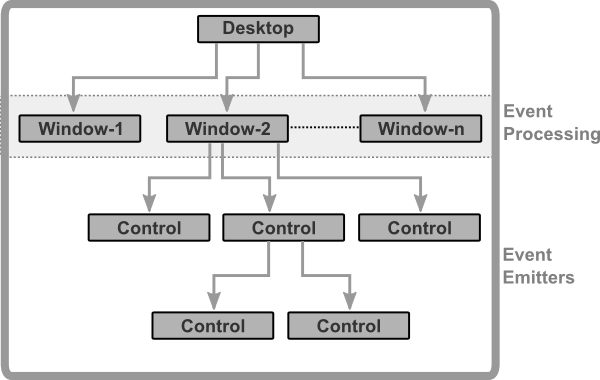Controls
All controls from AppCUI follow a tree-like organization (a control has a parent control and may have multiple children controls).

Remarks
- There is only one Desktop control. AppCUI provides a default one, but costom desktop can be created as well
- A Desktop control can have one or multiple Windows.
- All events emitted by any control are process at window level
- A control may contain other children controls
Every control has a set of common characteristics:
Layout(how it is position relative to its parent). The only exception in this case is the Desktop control that always takes the entire terminal space. More details on Layout section.Visibility(a control can be visible or not). The only exception is the Desktop control that will always be visible. A hidden control does not receive any input events and it is not drawn.Enabled(a control can be enabled or not). The only exception are the Desktop and Window controls that are always enabled. If a control is not enabled, it will not receive any input events (key pressed or mouse events) but it will still be drawn.HotKey(a combination of keys usually at the following form:Alt+<Letter|Number> that will automatically change the focus to the current control and execute a default action for it - for example for a checkbox, pressing that combination will check or uncheck the checkbox)
Besides this, a set of commonly available methods are available for all controls. These methods allow changing / accessing some attributes like visibility, loyout, hotkeys, etc. More deails can be found on Common methods for all Controls section.